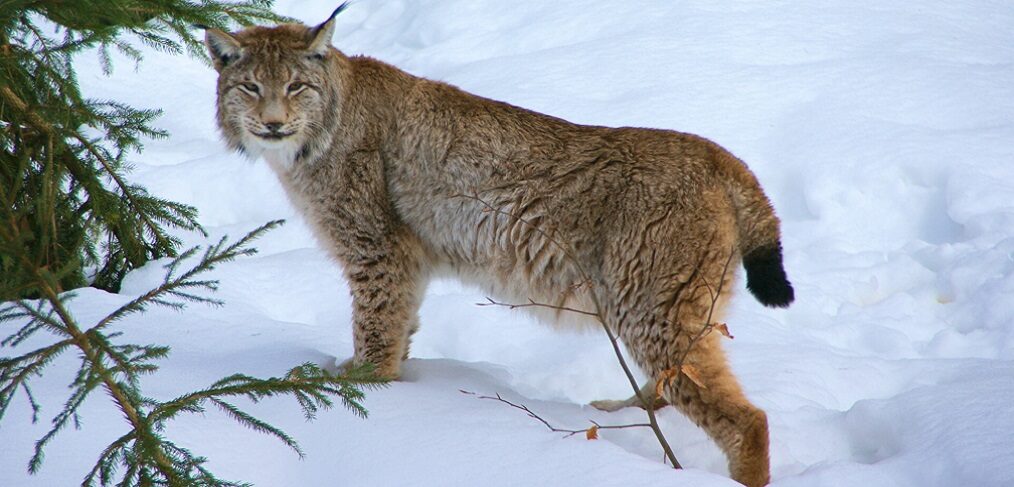
species of the week #32 – eurasian lynx
Lynxes belong to the cat family and reach approximately the size of a sheepdog. This makes them the fourth largest predator in Europe. Their fur is spotted, in summer it is mostly reddish brown and the spots are more pronounced. In winter the coat becomes denser and changes to a more brownish-grey coloring.
| Distribution status | strongly endangered |
| Residual occurence | Palatinate forest/Northern Vosges, Harz, Bavarian Forest, occasionally also in other federal states |
| Last Sighting in Rhineland-Palatinate | current |
| Habitat | Large forests rich in structure and transitions to extensive grassland |
| Threat | habitat fragmentation, road traffic, hunting |
The pattern of each lynx is not only beautiful but also unique like a fingerprint. Researchers can use it to identify individual lynxes and find out more about their migratory movements and family relationships.
Lynxes are predators and hunt animals up to the size of a deer. They are not dangerous for humans. On a roe deer, an adult lynx usually eats for several days; a hare or fox is usually eaten with the first meal. On average, a lynx kills 50 deer in one year. If they are not disturbed, lynxes then return to their kill for several nights until it is almost completely used up. Between meals, the lynx hides its prey under a layer of leaves, earth, grass or snow so that other forest inhabitants cannot find it. The lynx is a good winter hunter; its large paws prevent it from sinking deeply into the snow. “Ears like a lynx” is not just a saying: the characteristic brush ears enable it to locate deer up to half a kilometer away.
The dense road and rail network and settlements cut through potential habitats of the shy animals. They act like a barrier, separating populations or making contact between them more difficult. In addition, direct deaths are often caused by road and rail traffic. To reduce the barrier effect of large traffic arteries and to maintain a minimum of permeability of the landscape for migrating wildlife, a network of green bridges and smaller crossing aids is needed. Despite strict protection, illegal killing by shooting or poisoning is one of the main threats to the lynx
Since 2016 there is an EU-Life project in Rhineland-Palatinate for the reintroduction of lynx. The last four of the 20 lynxes originating from Switzerland and Slovakia were brought to the Palatinate Forest in spring 2020. Already 10 young animals have been born since 2016. Due to the high juvenile mortality of lynxes of 75% on average, the migration and also the death of some lynxes, the strength of the current population is uncertain. At the end of September, a lynx was sighted in the northern Rhineland-Palatinate near Sargenroth. It is still unclear whether this is due to migration from the Palatinate Forest / Northern Vosges Biosphere Reserve or immigration from other lynx areas.
Politically necessary:
– Comprehensive biotope networking
– Long-term, scientific monitoring of resettlement projects
– Green bridges and crossing aids
News about the Rhineland-Palatinate lynxes
Picture: By Aconcagua (talk) – Own work, CC BY-SA 3.0, https://commons.wikimedia.org/w/index.php?curid=6358217
To another species of the week here
